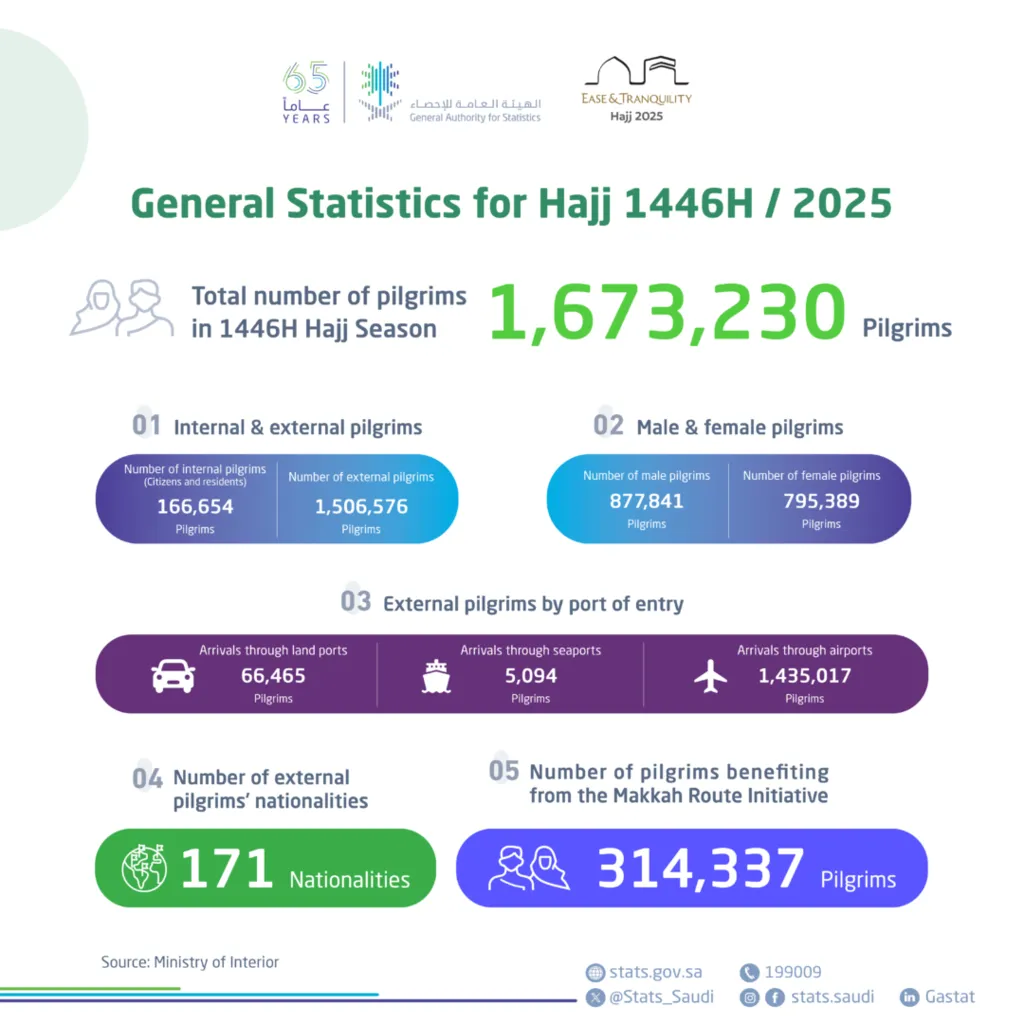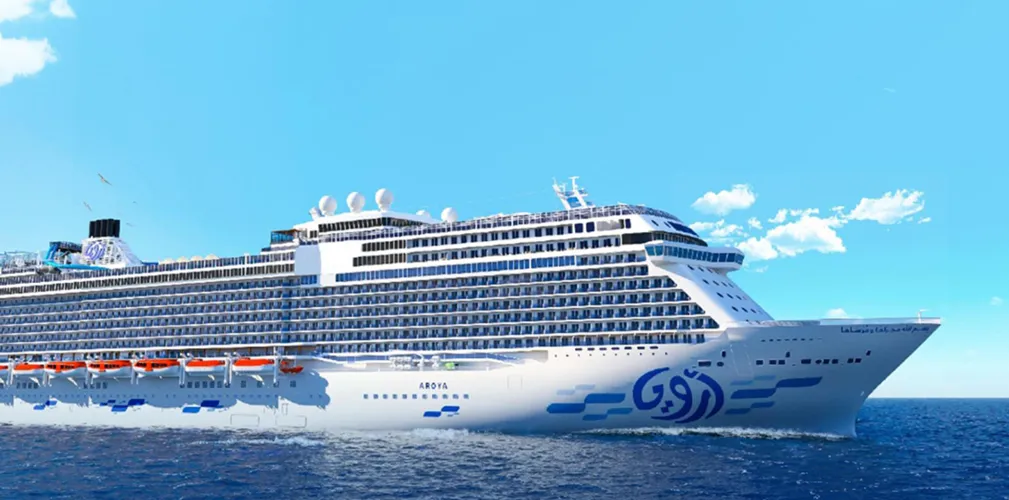Each year, the Hajj pilgrimage transforms Saudi Arabia’s transport system. In 2025, with nearly 1.7 million pilgrims arriving, the impact on mobility, infrastructure, and innovation was bigger than ever. Here’s a closer look at the ripple effects of the Hajj mobility economic impact.

Every year, millions of Muslims from around the world converge on Saudi Arabia for the Hajj. In 2025, nearly 1.7 million pilgrims made the journey, testing the limits of the Kingdom’s transportation system and once again demonstrating the wide-reaching Hajj mobility economic impact. This annual religious journey isn’t just about spiritual fulfillment, it drives investments in railways, airports, buses, and tech startups, shaping the country’s mobility landscape in visible and lasting ways.
And it’s not just about quantity; it’s about quality too. Pilgrims today expect better services, more comfort, and seamless experiences. These rising expectations, combined with the increasing volume of visitors, have made innovation and infrastructure upgrades not only necessary but urgent.
How does the annual Hajj pilgrimage influence transportation planning and investment?
Pilgrimage Planning: Why Hajj Drives Transport Investments Volume
For Saudi Arabia, Hajj is more than a religious obligation, it’s a national priority. It’s tightly tied to Vision 2030, the country’s long-term roadmap for economic transformation. Religious tourism already contributes over $12 billion a year to the economy, and that number is only expected to rise. To keep up, authorities plan meticulously every year and invest heavily in the systems that move people safely and efficiently.
Much of the progress we see, like the Haramain High-Speed Rail or the expanded terminals at Jeddah and Madinah airports, was built with Hajj in mind. But the benefits extend far beyond the pilgrimage season. These improvements also serve local residents and international visitors throughout the year.
This approach reflects a smart strategy: using a single, high-demand event to justify large-scale infrastructure projects that serve long-term national development. By treating Hajj as both a spiritual and logistical challenge, the Kingdom is building one of the most advanced multi-modal transport systems in the region.
What infrastructure upgrades are being made to accommodate growing pilgrim numbers?
Major Upgrades That Keep the Pilgrims Moving
Here’s a look at the major infrastructure that supported Hajj 2025:
- Airports: About 94% of pilgrims flew in. Jeddah’s Hajj terminal and Madinah’s airport handled the majority, thanks to recent upgrades that ease congestion and speed up processing.
- Rail: The Haramain train line ran more than 4,700 trips this season, offering over 2 million seats between key cities. The Makkah Metro, operating only during Hajj, served more than 2 million riders across the holy sites.
- Roads and Buses: Over 23,000 buses were deployed, with dedicated lanes and updated roads around Makkah. Cooling technologies and shaded paths helped pilgrims cope with the heat.
- Smart Systems: From AI-powered traffic control to thermal road sensors and electronic gates, high-tech solutions kept things running smoothly even under pressure.
These investments reflect the growing understanding that comfort, safety, and speed are no longer luxuries, they are expectations. Pilgrims are coming from over 170 countries, often after months of preparation and significant expense. For many, this is a once-in-a-lifetime trip, and a smooth transport experience is critical to its success.
All of these aren’t just Hajj-specific, instead they’re long-term bets on Saudi Arabia’s future as a global religious and tourism hub.
Which transport sectors (aviation, rail, buses) are most affected by Hajj activity?
Sectors Most Affected by the Pilgrimage
When it comes to who feels the weight of Hajj, three sectors stand out:
- Airlines & Airports: These operate at full tilt during the season, with Jeddah’s KAIA among the busiest airports in the world.
- Trains: High-speed and metro lines are crucial to easing road congestion and transporting pilgrims quickly and safely.
- Buses: Despite rail advancements, buses remain essential, especially for the day-to-day movements between sites like Mina, Arafat, and Muzdalifah.
Pilgrimage transport doesn’t just strain infrastructure, it also requires an entire workforce. Drivers, air traffic controllers, transport police, and volunteers all play vital roles, further emphasizing the social and economic magnitude of the season.
Each mode plays a critical part in the Hajj machine, and each has had to evolve to meet the growing demand.
How do local mobility startups and ride-hailing platforms benefit from the Hajj season?
Ride-Hailing and Local Startups Ride the Wave
Hajj also boosts the local tech scene. Ride-hailing apps like Careem, Kaiian, and inDrive see a seasonal surge in users, offering:
- Fixed-rate rides to and from major locations.
- Arabic-English interfaces and customer service.
- Integration with Hajj traffic plans and smart pickup zones.
Meanwhile, startups in mobility, logistics, and navigation are building apps to help pilgrims find their tents, schedule trips, and avoid crowds. The Hajj period is often a launchpad for new tools and partnerships that carry into the rest of the year.
Some of these startups use Hajj as a proving ground. If a service works for millions in one of the world’s most complex logistical environments, it’s likely to succeed elsewhere. That’s why many local companies see Hajj as a make-or-break opportunity to showcase their innovation and scalability.
What innovations are emerging to improve the efficiency of pilgrim transport logistics?
A Glimpse into the Future of Pilgrimage Travel
The 2025 Hajj saw a noticeable increase in tech integration:
- AI monitoring systems analyzed crowd density and helped reroute traffic.
- Drones monitored crowds and supported emergency services.
- Heat-reducing road surfaces and smart sensors enhanced safety.
- Autonomous vehicles and electric buses were piloted in certain areas.
- Nusuk, the official Hajj platform, issued smart cards and streamlined visa, transport, and accommodation processes.
These innovations are helping Saudi Arabia build a smarter, safer pilgrimage, and positioning the country as a leader in transport innovation.
Looking forward, many of these pilots will likely become permanent. As technologies mature and infrastructure scales up, the Kingdom is on track to deliver a digitally integrated pilgrimage where delays are minimized, comfort is maximized, and every pilgrim’s journey is both memorable and safe.
The Hajj mobility economic impact is both immediate and lasting. While the pilgrimage lasts just a few days, the investments it triggers; new roads, smarter systems, better logistics are shaping the Kingdom’s infrastructure for decades. As Saudi Arabia works toward hosting 3 million Hajj pilgrims and 30 million Umrah visitors annually by 2030, its focus on smart, inclusive mobility will be more important than ever.
Beyond the numbers, what’s truly remarkable is how a religious tradition is driving some of the most ambitious transport innovation in the world today. Saudi Arabia is not just moving people, it’s reimagining how mobility can serve purpose, culture, and progress all at once.
Curious about how Saudi Arabia’s transport evolution could impact your business? Reach out to Market Research Saudi Arabia for tailored insights and strategic support.
FAQs
1. How is safety ensured during Hajj transport?
From AI surveillance and real-time crowd alerts to over 900 ambulances and mobile clinics, Saudi authorities coordinate a full safety system each year. There are also strict crowd permits, real-time monitoring, and specialized teams for medical response.
2. What role do local startups play during Hajj?
Startups support everything from navigation apps and bus fleet tracking to translation tools and emergency alerts. Some even test drone delivery and wearable devices. Hajj gives these companies a chance to prove their tech on the world stage.
3. Why do Hajj transport investments matter beyond the pilgrimage?
These upgrades aren’t just for one event, they help modernize the country’s infrastructure, drive tourism, and create jobs. The smart systems and networks piloted during Hajj are often expanded to benefit citizens and businesses across Saudi Arabia.







